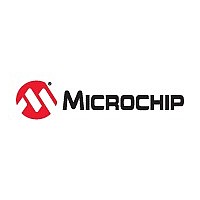DSPIC30F4013-20E/P Microchip Technology Inc., DSPIC30F4013-20E/P Datasheet - Page 77

DSPIC30F4013-20E/P
Manufacturer Part Number
DSPIC30F4013-20E/P
Description
16 BIT MCU/DSP 40LD 20MIPS 48 KB FLASH
Manufacturer
Microchip Technology Inc.
Type
DSPr
Datasheet
1.DSPIC30F4013-20EP.pdf
(204 pages)
Specifications of DSPIC30F4013-20E/P
A/d Inputs
13-Channels, 12-Bit
Comparators
4
Cpu Speed
30 MIPS
Eeprom Memory
1K Bytes
Input Output
30
Interface
CAN, I2C/SPI/UART, USART
Ios
30
Memory Type
Flash
Number Of Bits
16
Package Type
40-pin PDIP
Programmable Memory
48K Bytes
Ram Size
2K Bytes
Timers
5-16-bit, 2-32-bit
Voltage, Range
2.5-5.5
Lead Free Status / Rohs Status
RoHS Compliant part
Electrostatic Device
Available stocks
Company
Part Number
Manufacturer
Quantity
Price
Company:
Part Number:
DSPIC30F4013-20E/PT
Manufacturer:
Microchip Technology
Quantity:
10 000
- Current page: 77 of 204
- Download datasheet (4Mb)
10.0
This section describes the 32-bit general purpose
Timer module (Timer2/3) and associated Operational
modes. Figure 10-1 depicts the simplified block dia-
gram of the 32-bit Timer2/3 module. Figure 10-2 and
Figure 10-3
independent 16-bit timers, Timer2 and Timer3,
respectively.
The Timer2/3 module is a 32-bit timer (which can be
configured as two 16-bit timers) with selectable
operating modes. These timers are utilized by other
peripheral modules, such as:
• Input Capture
• Output Compare/Simple PWM
The following sections provide a detailed description,
including setup and Control registers, along with asso-
ciated block diagrams for the operational modes of the
timers.
The 32-bit timer has the following modes:
• Two independent 16-bit timers (Timer2 and
• Single 32-bit timer operation
• Single 32-bit synchronous counter
Further, the following operational characteristics are
supported:
• ADC event trigger
• Timer gate operation
• Selectable prescaler settings
• Timer operation during Idle and Sleep modes
• Interrupt on a 32-bit period register match
These operating modes are determined by setting the
appropriate bit(s) in the 16-bit T2CON and T3CON
SFRs.
For 32-bit timer/counter operation, Timer2 is the ls word
and Timer3 is the ms word of the 32-bit timer.
© 2006 Microchip Technology Inc.
Note: This data sheet summarizes features of this group
of dsPIC30F devices and is not intended to be a complete
reference source. For more information on the CPU,
peripherals, register descriptions and general device
functionality, refer to the “ dsPIC30F Family Reference
Manual “(DS70046).
Timer3) with all 16-bit operating modes (except
Asynchronous Counter mode)
Note:
TIMER2/3 MODULE
For 32-bit timer operation, T3CON control
bits are ignored. Only T2CON control bits
are used for setup and control. Timer2
clock and gate inputs are utilized for the
32-bit timer module, but an interrupt is
generated with the Timer3 interrupt flag
(T3IF) and the interrupt is enabled with the
Timer3 interrupt enable bit (T3IE).
show
Timer2/3
configured
dsPIC30F2011/2012/3012/3013
as
two
16-bit Timer Mode: In the 16-bit mode, Timer2 and
Timer3 can be configured as two independent 16-bit
timers. Each timer can be set up in either 16-bit Timer
mode or 16-bit Synchronous Counter mode. See
Section 9.0 “Timer1 Module” for details on these two
operating modes.
The only functional difference between Timer2 and
Timer3 is that Timer2 provides synchronization of the
clock prescaler output. This is useful for high frequency
external clock inputs.
32-bit Timer Mode: In the 32-bit Timer mode, the timer
increments on every instruction cycle, up to a match
value preloaded into the combined 32-bit Period
register PR3/PR2, then resets to ‘0’ and continues to
count.
For synchronous 32-bit reads of the Timer2/Timer3
pair, reading the ls word (TMR2 register) causes the ms
word to be read and latched into a 16-bit holding regis-
ter, termed TMR3HLD.
For synchronous 32-bit writes, the holding register
(TMR3HLD) must first be written to. When followed by
a write to the TMR2 register, the contents of TMR3HLD
is transferred and latched into the MSB of the 32-bit
timer (TMR3).
32-bit Synchronous Counter Mode: In the 32-bit
Synchronous Counter mode, the timer increments on
the rising edge of the applied external clock signal
which is synchronized with the internal phase clocks.
The timer counts up to a match value preloaded in the
combined 32-bit period register, PR3/PR2, then resets
to ‘0’ and continues.
When the timer is configured for the Synchronous
Counter mode of operation and the CPU goes into the
Idle mode, the timer stops incrementing unless the
TSIDL (T2CON<13>) bit = 0. If TSIDL = 1, the timer
module logic resumes the incrementing sequence
upon termination of the CPU Idle mode.
DS70139D-page 75
Related parts for DSPIC30F4013-20E/P
Image
Part Number
Description
Manufacturer
Datasheet
Request
R

Part Number:
Description:
MODULE DSPIC30F SAMPLE 64QFP
Manufacturer:
Microchip Technology
Datasheet:

Part Number:
Description:
MODULE DSPIC30F SAMPLE 80QFP
Manufacturer:
Microchip Technology
Datasheet:

Part Number:
Description:
MPLAB C Compiler For DsPIC DSCs
Manufacturer:
Microchip Technology
Datasheet:

Part Number:
Description:
DEVICE ATP FOR ICE4000
Manufacturer:
Microchip Technology
Datasheet:

Part Number:
Description:
DEVICE ATP FOR ICE4000
Manufacturer:
Microchip Technology
Datasheet:

Part Number:
Description:
DEVICE ATP FOR ICE4000
Manufacturer:
Microchip Technology
Datasheet:

Part Number:
Description:
MODULE PLUG-IN PIC18F4431
Manufacturer:
Microchip Technology
Datasheet:

Part Number:
Description:
IC, DSC, 16BIT, 12KB 40MHZ, 5.5V, SOIC28
Manufacturer:
Microchip Technology
Datasheet:

Part Number:
Description:
IC, DSC, 16BIT, 24KB 40MHZ, 5.5V, TQFP44
Manufacturer:
Microchip Technology
Datasheet:

Part Number:
Description:
IC, DSC, 16BIT, 48KB, 40MHZ, 5.5V, DIP40
Manufacturer:
Microchip Technology
Datasheet:

Part Number:
Description:
IC, DSC, 16BIT, 48KB 20MHZ, 5.5V, SOIC28
Manufacturer:
Microchip Technology
Datasheet:

Part Number:
Description:
IC, DSC, 16BIT, 66KB, 40MHZ 5.5V TQFP-64
Manufacturer:
Microchip Technology
Datasheet:

Part Number:
Description:
IC, DSC, 16BIT, 12KB, 40MHZ, 5.5V, QFN28
Manufacturer:
Microchip Technology
Datasheet:

Part Number:
Description:
16BIT 30MIPS DSPIC, 30F2010, DIP28
Manufacturer:
Microchip Technology
Datasheet:

Part Number:
Description:
16BIT MCU-DSP 30MHZ, SMD, 30F5011
Manufacturer:
Microchip Technology
Datasheet:











